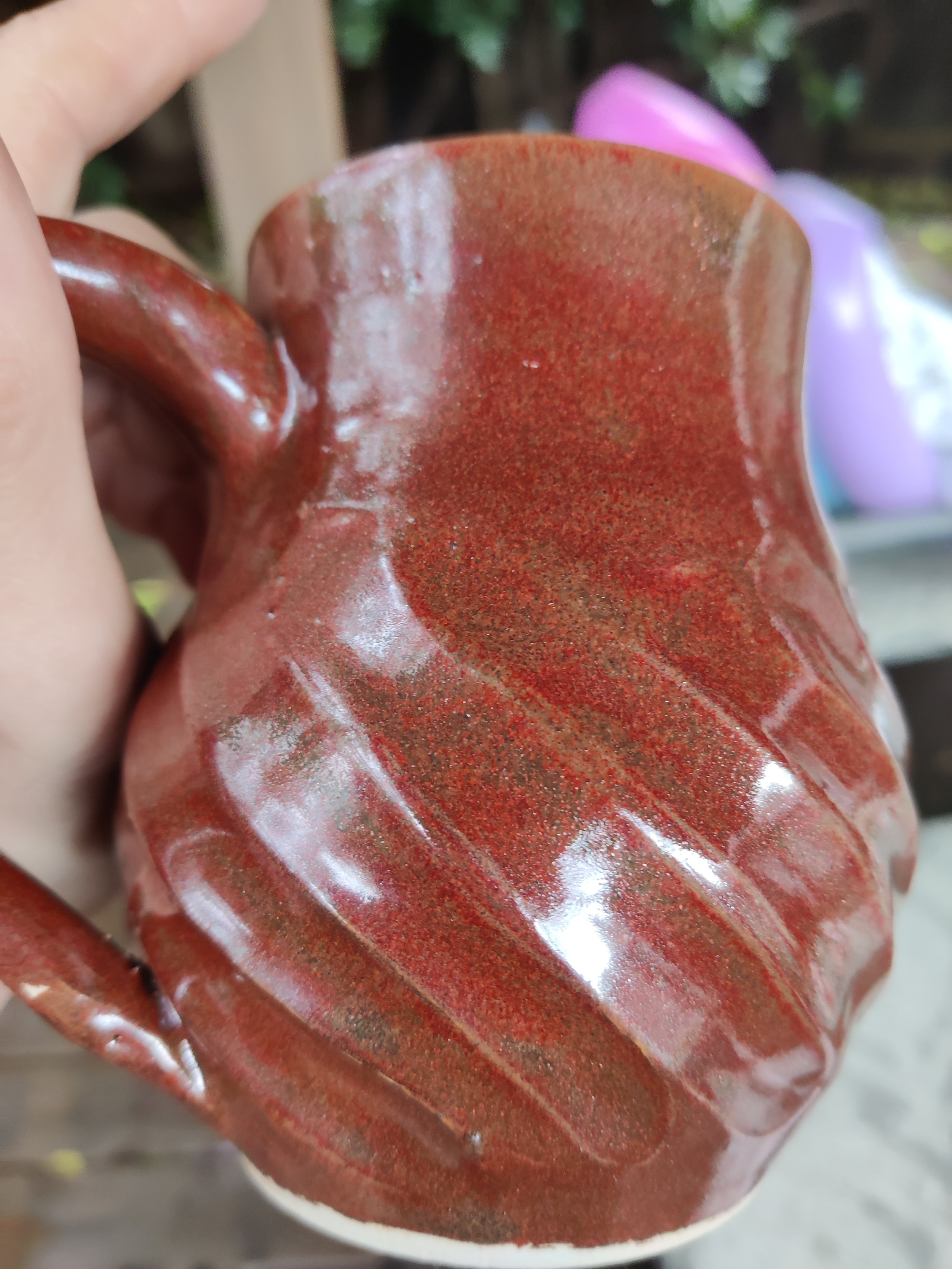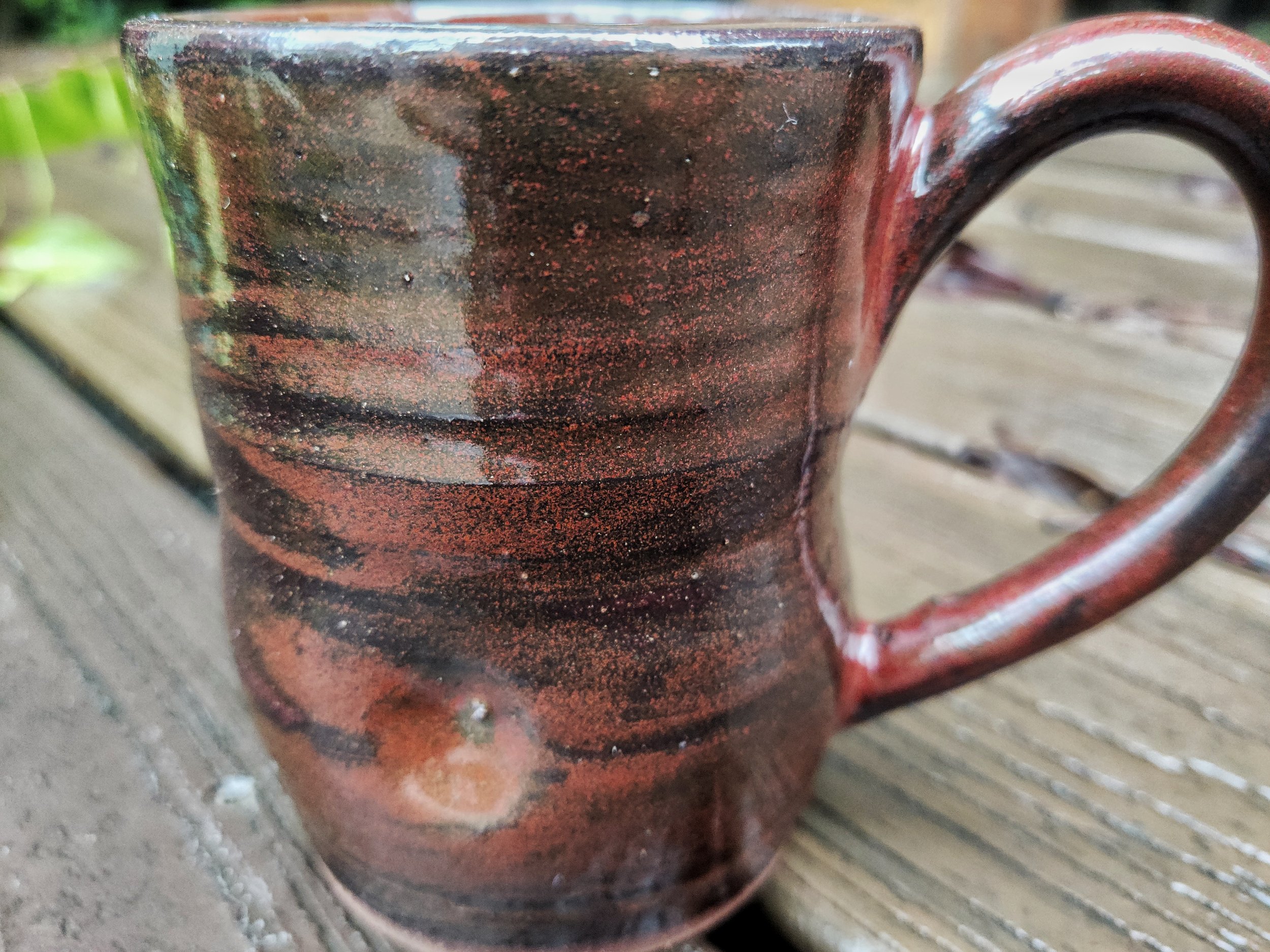Finally a good red
For those of you who have been keeping up with my obsession for getting a true cone 6 oxidation red, I have some great news. I finally found a red recipe that was close enough to work with that is not a tin chrome red (most of them turn some variation of violet). I am learning quit a bit about the stull chart with all these experiments; narrowing down the necessary things that make a good iron saturated red.
1: it’s probably going to be in the phase separation or crystal area of the stull chart
2: The most consistent ones are called “Kaki Reds”
3: they have to be as clean as possible. This means Little to no water soluble minerals.
4: high sodium flux
The first glaze I found that fit most of these perimeters was a glaze called “Red Jacket” made by Joseph Brazda.
https://glazy.org/recipes/68659
I tested this glaze with a 40 min hold just to see what would happen (even though I saw the water soluble Minerals). Note that the glaze is mostly brown. I have hypothesized that glazes with a lot water soluble materials such as Lithium carb need an extra layer of glaze to produce the desired color, a quick double dip even. The red you see on the jar in image #1 is a result of an extra brush stroke as my way of confirming my hypothesis about water solubility. It seems for this experiment I was correct.
The bowl in image 2 had no such treatment. It is just a single dip. Probably why it’s externally dull.
Image 1: Red jacket original recipe 40 min hold at 1800F in ox on a jar
Image 2: Red jacket original recipe 40 min hold at 1800F in ox on a bowl
Looking into Joseph’s profile I see he is one step ahead of me. He had already made a revision of red jacket without Lithium a couple years prior. He must have been on the same path I am on. I found a glaze he called “Red Jacket revised” where he replaced alot of the flux from the lithium with flux from spodumene. Another sodium based flux that carries a lot of silica with it. https://glazy.org/materials/76946 . Of course I tested this as well. It came out so much more constant than version 1.
Image 3 and 4 you can see the red coming through far better in comparison to it’s water soluble counterpart. To boot I did not double dip or brush any of these (Needed to see if they would turn brown with no double glazing to disprove my hypothesis. But it didn’t) These next three pictures are all with the 40 min hold in oxidation at 1800f as well
image 3: Red Jacket revised on a b-mix clay body with the 40 min hold in oxidation at 1800f
image 4: Red Jacket revised on a b-mix clay body with the 40 min hold in oxidation at 1800f
image 5: Red Jacket revised on a red stone clay body with the 40 min hold in oxidation at 1800f
I was very Happy with these results but noticed it had too much free floating silica coming in with the Spodumene. I decided to try to make this glaze as efficient and clean as possible with frit 644; A frit that brings a good amount of silica and sodium flux to the party without going overboard. This ended up in a revision of a revision called “Red jacket efficient” ( I might change the name later as it seems a bit rude to “fix” someones glaze and call it more efficient”
p.s There will be a part 2 to this blog as I have no put the recipe on glazy with correct photos. It will be up soon. Before I go I wnt to give a big shout out to Joseph Brazda ( glazy profile here) https://glazy.org/u/brazdaceramics/recipes as he did most of the work for me without even knowing it.





